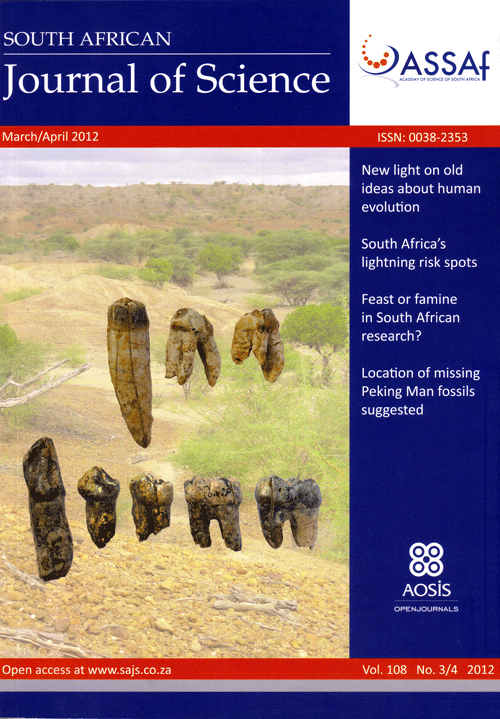The evolution of cranial form in mid-Pleistocene Homo
Abstract
Interactions of the brain and cranium in archaic populations remain poorly understood. Hominin fossils from Middle Pleistocene localities in Africa and Europe have been allocated to one or more species distinct from Homo erectus, the Neanderthals and modern humans, based on the assumption that characters of the vault and face are developmentally independent. However, it is possible that increased frontal width, parietal lengthening, midvault expansion and occipital rounding all reflect encephalisation occurring within the H. erectus lineage. If specimens from Broken Hill and Elandsfontein (in southern Africa) and Sima de los Huesos and Petralona (in Europe) differ from H. erectus only in brain volume, then it will be difficult to distinguish and diagnose Homo rhodesiensis or Homo heidelbergensis adequately. In this study, correlation analysis showed that the brain fails to influence vault breadth within either H. erectus or the mid-Pleistocene sample. Instead, the (large) cranial base has a major effect on width. Variation in brain volume is not associated with frontal flattening. In H. erectus and in individuals such as Bodo and Petralona, the massive face seems to override the brain as a determinant of frontal curvature. Small H. erectus crania have rounded occipitals, whilst larger individuals show greater flexion. Later hominins do not follow this trend, and encephalisation cannot explain the occipital rounding that is present. Few of the vault characters considered diagnostic for the mid-Pleistocene fossils can be attributed to increasing brain volume. The situation is complex, as of course the brain must influence some traits indirectly. The cranial base is also an instrument of change. Discriminant analysis identified basicranial breadth as critical to distinguishing individuals such as Broken Hill, Sima de los Huesos and Petralona from H. erectus.
Downloads
Published
Issue
Section
License

All articles are published under a Creative Commons Attribution 4.0 International Licence
Copyright is retained by the authors. Readers are welcome to reproduce, share and adapt the content without permission provided the source is attributed.
Disclaimer: The publisher and editors accept no responsibility for statements made by the authors
How to Cite
- Abstract 201
- PDF (743 KB) 255
- HTML 102
- EPUB 78
- XML 75
- Figure 1 0
- Figure 2 0
- Table 1 0
- Table 2 0
- Table 3 0
- Table 4 0
- Table 5 0
- Table 6 0
- Table 7 0
- Table 8 0
- Table 9 0












.png)